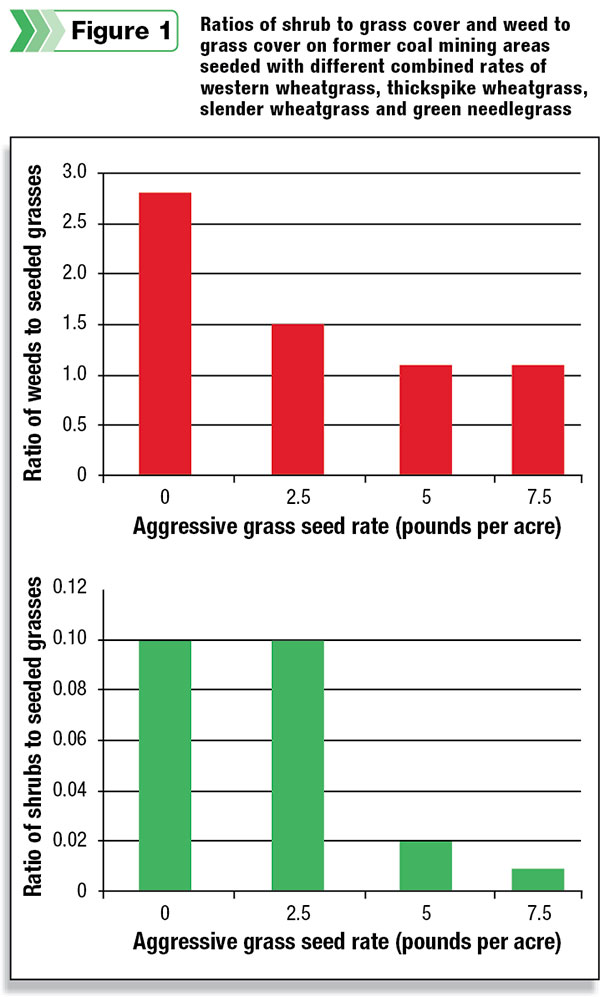Most of the studies apply seeding and other management practices (e.g., herbicides, tillage) to small plots and then monitor the results for only a few years. These studies have developed ways to get young plants to establish, but what matters most to producers and other land managers is that, over the long term, the young plants grow into healthy stands of desirable vegetation.
Figuring out what practices best encourage desirable seeded vegetation to develop over the long term can require moving away from small plots and instead doing large-scale experiments.
However, large-scale, long-term studies are very expensive, so they are rarely done. One way of getting the large-scale, long-term information managers need to make decisions about seeding without the expense of large-scale experiments is to study real-world seeding efforts.
Recently, I collaborated with other scientists in taking this approach. The group studied results of real-world seeding efforts directed at former coal mining lands in Montana and Wyoming.
These lands provided an ideal situation for identifying effective seeding practices because mine personnel seeded new sets of large fields every year, and they kept records on seed mixes, seeding rates, herbicide use and other features of their reclamation activities. Our study included 350 fields seeded with a variety of different practices between 1985 and 2007.
The research group measured the vegetation occurring on the fields of the study, all of which had been seeded with mixes of grasses, forbs and shrubs.
We found that on some fields, weeds were nearly three times more abundant than seeded grasses, and these fields turned out to be ones where the aggressive native grasses – Western wheatgrass, thickspike wheatgrass, slender wheatgrass or green needlegrass – were excluded from the seed mixes (Figure 1).

On the other hand, where these grasses were included in the seed mixes, annual weed numbers were cut nearly in half. The amounts of the aggressive grasses that occurred in the seed mixes did not matter much: Whether they were sown at 2.5, 5 or 7.5 pounds per acre, they seemed to control weeds equally well over the long run.
Therefore, it appears managers would risk little and would save appreciable money on seed if they used low seed rates of the aggressive grasses.
In parts of the western U.S., as well as other rangeland ecosystems elsewhere on the globe, managers are trying to increase native shrub numbers, primarily to improve wildlife habitat but also because shrubs provide valuable livestock forage in some places. The mines where the study took place have been working to increase the shrub big sage in order to provide habitat for greater sage grouse, a species of conservation concern.
In addition to finding that low grass seed rates were sufficient to control weeds, our research found low grass rates also encouraged shrubs. In particular, big sage, fringed sage, winterfat and four-wing saltbrush were considerably more numerous where the aggressive grasses were sown at low rates (Figure 1).
Conversely, where these grasses were sown at high rates, the shrubs were rapidly choked out by the quickly establishing grasses.
Grass competition had the potential to be so intense that shrubs actually took hold better in dry years because the lack of precipitation prevented grasses from quickly growing large and out-competing shrubs.
Where grasses were sown at low rates, they remained sparse for a longer period of time, and this provided an opportunity for shrub roots to penetrate deep soil layers where they could access water and nutrients inaccessible to the more shallow-rooted grasses.
Once shrubs accessed the deep soil layers, they were able to co-exist with grasses. In addition to boosting shrubs, we believe low seed rates of aggressive grasses could help other plants that are difficult to establish, such as warm-season grasses (e.g., buffalograss, blue grama) and forbs.
One of the main messages of the study is that the species in the seed mix and the rates at which they are sown can continue to matter for a long time.
A lot of work remains to come up with the best seed mixes and rates for particular situations, but the good news is that identifying good seed mixes and rates could substantially improve efforts to reverse rangeland degradation. ![]()
Matthew Rinella is a rangeland researcher with the USDA-Agricultural Research Service Fort Keogh Livestock and Range Research Laboratory. Email Matthew Rinella.







